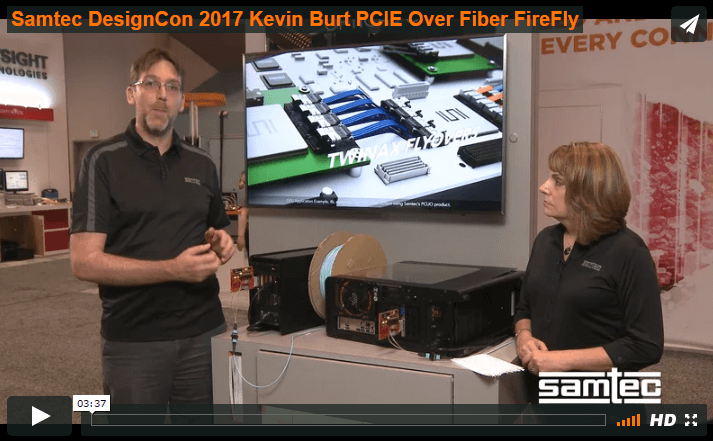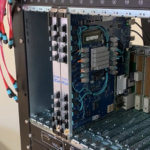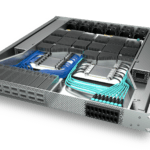Digitization!
Everyday, more of our daily life – work, play, sleep, food, entertainment and more – seems to have an online component. The coronavirus pandemic has accelerated the digitization trend – “Zoom me!” However, digitization has been ongoing for decades.
A foundation of daily digitization goes back to Moore’s law. CPUs are denser and faster than ever before. Computing networks based on x86 system architectures live on in laptops, workstations, servers and any number of embedded applications. Homogenous computer networks have been the backbone of daily life.

In recent years, a number of different compute engines – FPGAs, SoCs, GPUs, TPUs among others – have outgrown their niche beginnings. At one point, the idea of an FPGA or a GPU in a computing application may not have made sense. However, with improved performance and less power, heterogeneous networks based on newer compute engines are redefining computer networks.
The Need for New Fabrics
New computing architectures require new interconnects and new fabrics.
Modern computing networks process massive amounts of data. Data rates are increasing, and CPU counts are growing. CPU-based designs have a finite number of DDR channels and PCIe lanes. These trends are not sustainable. There needs to be a better way to process that data quicker.
In addition to that, current PCIe buses are limited to:
- A single PCIe link per card
- Limited placement to motherboard slots
- Stranded memory
and DDR buses are limited to:
- DDR channel must be dedicated to SCM
- Single Channel / SCM (performance / reliability)
- Stranded Memory; access limited to local components
- Limited to memory media supported by processors
Gen-Z Technology: To The Rescue!
Gen-Z Technology is a universal interconnect system and fabric technology that’s built from the ground up. It’s an open-systems fabric – based architecture designed to interconnect processors, memory devices, and accelerators.

The fabric enables resource provisioning and sharing to support a diverse range of applications and provide flexibility for system reconfiguration as application demands for different resources change.
- Open
- High Performance
- Reliable
- Secure
- Flexible
- Compatible
- Economic
Gen-Z Components: Available Now?
The Gen-Z Consortium has been around for a few years. What Gen-Z solutions or components are available to support build next-hen heterogeneous computing networks? That is the subject of the webinar Laying the Foundation: Gen-Z Components for Heterogeneous Computing Networks.
In this webinar, technical experts from the Gen-Z Consortium will examine the key Gen-Z components necessary for future heterogeneous computing network functionality. Components cover include Gen-Z Scalable Connectors, Micro Development Kits, Memory Modules and more.
No doubt, this exciting webinar will demonstrate how Gen-Z enables next-gen heterogeneous computing networks.



Leave a Reply